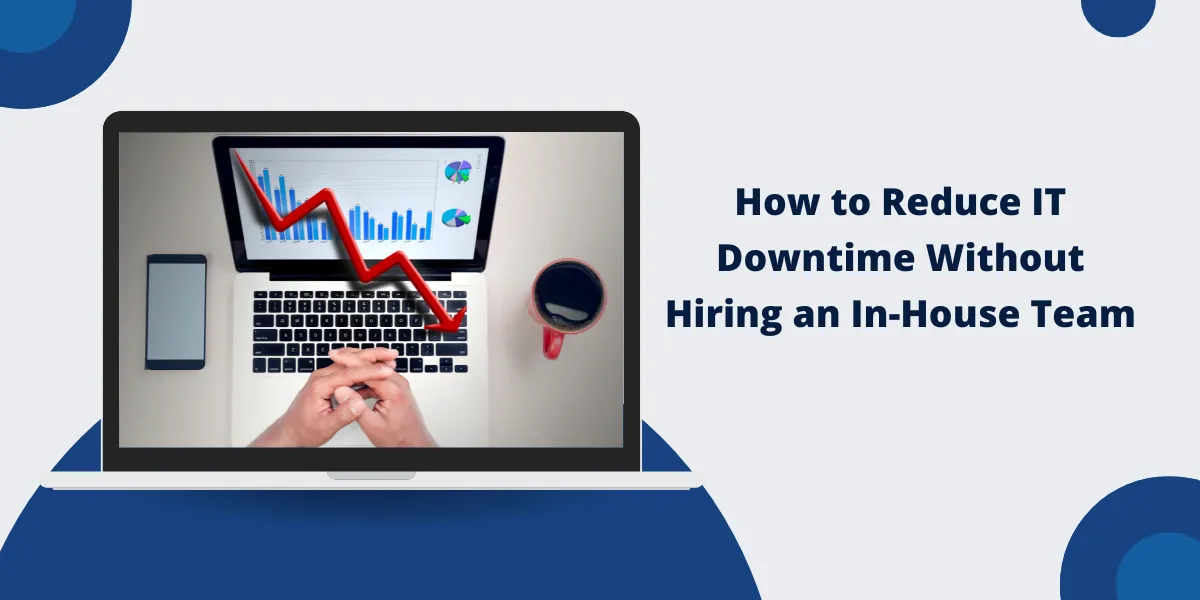IT downtime can be a business’s worst nightmare. It disrupts operations, causes delays, and impacts productivity. If you’re running a small to medium-sized business, the last thing you want is to be bogged down by IT issues that take up valuable time and resources.
While hiring an in-house IT team may seem like the ideal solution, it’s often unnecessary and costly. Fortunately, there are other strategies you can implement to reduce downtime without expanding your workforce, such as outsourcing your IT to support services like HTL Support.
Step 1 – Audit Your Current IT Setup
The first step is to assess your current IT infrastructure. Take a close look at your hardware, software, and network systems to identify any weak spots. Are there recurring issues with certain systems or applications? Are there outdated devices or software that frequently cause problems? Understanding where your problems lie is key to addressing them effectively.
Conducting an audit will help you prioritize what needs fixing. Make a list of critical systems and operations that rely on IT and evaluate their performance. If you find areas where your setup is lacking or underperforming, these should be your first focus. This will also help you decide if certain problems can be resolved internally or if outsourcing is the better option.
Step 2 – Switch to Managed Cloud Services
One of the most effective ways to minimize downtime is to switch to cloud-based services. Cloud solutions are more reliable, scalable, and often come with built-in redundancy. Unlike traditional on-premises servers, cloud services are designed to ensure that even if one server goes down, your business continues to operate smoothly.
Managed cloud services offer consistent uptime and often come with automatic updates, security patches, and backup solutions. By moving critical systems and data to the cloud, you can free yourself from the worries of server maintenance and reduce the risk of downtime due to hardware failure. With cloud services, you only pay for what you need, and scalability is a breeze.
Step 3 – Choose a Reliable Outsourced IT Provider
When it comes to IT support, outsourcing can be your best friend. Rather than managing everything in-house, you can partner with an IT provider that specializes in proactive support and maintenance. A reliable outsourced IT provider can handle everything from troubleshooting to system upgrades, ensuring your business stays operational without the overhead costs of hiring full-time staff.
Look for a provider who offers 24/7 support, quick response times, and a proactive approach to issues. Companies like HTL Support offer tailored IT support services, meaning they can assess your specific needs and provide a plan to ensure uptime. Their expertise can save you time, money, and headaches, giving you access to specialized skills without the need to expand your internal team.
Step 4 – Monitor Performance Metrics Regularly
Tracking your IT systems’ performance is essential for identifying potential problems before they escalate. Regularly monitoring system health, network speeds, uptime, and user activity allows you to spot issues early on. Using performance metrics, you can get real-time insights into how your IT infrastructure is operating.
There are numerous tools available to track your IT performance, from network monitoring software to cloud-based dashboards. These tools give you a snapshot of your systems’ health and alert you to any irregularities. Keeping an eye on these metrics can help you quickly resolve problems and avoid downtime before it affects your business.
Step 5 – Create a Clear Incident Response Plan
Even with all the proactive steps in place, downtime is sometimes inevitable. That’s why having a clear incident response plan is crucial. This plan should outline the steps to take in case of an IT failure, including who to contact, what actions to take, and how to minimize disruption.
An effective incident response plan should include contact details for your outsourced IT provider, specific protocols for different types of issues (e.g., server downtime, cybersecurity breach), and an outline of how to communicate with your team during downtime. Ensuring that everyone knows their role in the event of an IT emergency can significantly reduce recovery time and minimize disruption to your business.
Final Thoughts
Implementing these steps will not only help reduce IT downtime but also streamline your IT operations without the need for an in-house team. Whether you’re improving your current setup, switching to cloud services, or working with a trusted IT partner like HTL Support, the key is to be proactive and prepared. With the right strategies, your business can avoid costly downtime and continue to thrive.

Priya Mervana
 Verified Web Security Experts
Verified Web Security Experts
Priya Mervana is working at SSLInsights.com as a web security expert with over 10 years of experience writing about encryption, SSL certificates, and online privacy. She aims to make complex security topics easily understandable for everyday internet users.



